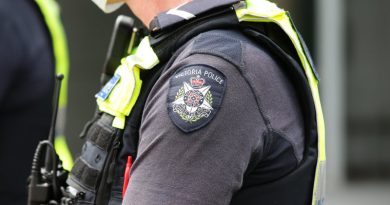Veteran ocean explorer becomes deepest diving New Zealander with Mariana Trench expedition
A Kiwi and an Australian have set new records for their respective countries with their dive to the deepest part of the world’s ocean.
And not only did the duo descend deeper that than the height of Mt Everest, they also took Marmite sandwiches and Anzac biscuits to new depths.
Kiwi Rob McCallum and Australian Tim Macdonald also set a more light-hearted record during their dive: the world’s deepest-ever Vegemite sandwich and Anzac biscuits.
“[It] is something only Australasians really understand,” Macdonald said.
On April 8, the pair descended 10,925 metres in a submersible ocean vehicle to the bottom of The Challenger Deep in the Mariana Trench, located 360km south west of Guam.
In doing so, they became the deepest diving Australian and Kiwi ever.
The purpose of the 12-hour dive was to test acoustic navigation equipment that would be used to aid deep ocean research.
Researchers operating at extreme depths rely on acoustic telemetry to navigate and know precisely where samples were collected.
A 20-year veteran of ocean exploration, McCallum and his company EYOS Expeditions has planned and led hundreds of expeditions.
“We did spare a thought for Sir Ed (Hillary) as we descended through 8850m, the equivalent height of Everest, and still had another couple of kilometres to go,” he said.
“It’s a very long way down and testament to the incredible engineering that has gone into this vehicle and to the team that supports it,” said McCallum.
Submersible ocean vehicle: What is it?
The 12-hour dive was completed by submersible ocean vehicle, the DSV Limiting Factor, a Triton 36,000/2 submarine owned by private company Caladan Oceanic.
It took humans to deepest point in each of the world’s five oceans during the 2019 Five Deeps Expedition.
The two-seat submersible can withstand pressures of up to 1400 bar.
Macdonald said that’s akin to having 11,000 tonnes per square metre of pressure at full ocean depth.
“The pressure on the hatch alone is equivalent to 2200 tonnes or five fully laden 747s.”
McCallum and Macdonald conducted technical acoustic tracking exercises, ran a 2000m long high-definition camera transect and collected geological samples.
The submersible interacted with three autonomous ‘landers’ that had been placed on the seafloor prior to the dive and used its manipulator to collect geological samples.
The pair’s team was made up 34 people of 14 nationalities, but McCallum said there was a special “Anzac” bond between the Australians and Kiwis.
“The team labelled this ‘the Anzac Dive’ and the name stuck long before we were given official permission to use it”
Macdonald said it was “terrific” to have a Kiwi and Aussie work side by side.
“In that regard, it was a very Anzac dive, two good mates from opposite sides of the Tasman working together under pressure.”
Source: Read Full Article

/cloudfront-ap-southeast-2.images.arcpublishing.com/nzme/TSKVMTVNIFVQSWJN7QVEIAPOJM.jpg)
/cloudfront-ap-southeast-2.images.arcpublishing.com/nzme/SJOGM4THCTPEFO5MK3PYXMKZFI.jpg)
/cloudfront-ap-southeast-2.images.arcpublishing.com/nzme/GCIQWJZXIEOUEZHY6W5UW5C4SY.jpg)
/cloudfront-ap-southeast-2.images.arcpublishing.com/nzme/7H665TXIGXN2HIHZ4HIWI4GQW4.jpg)
